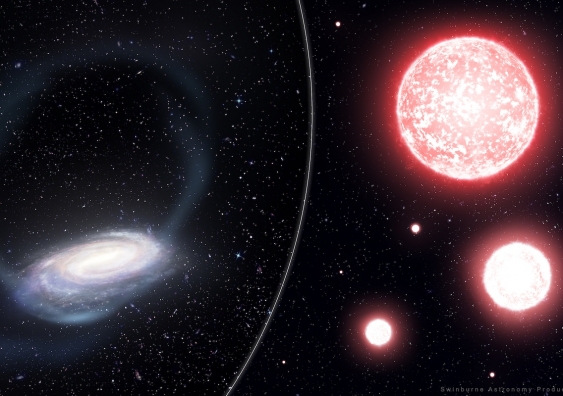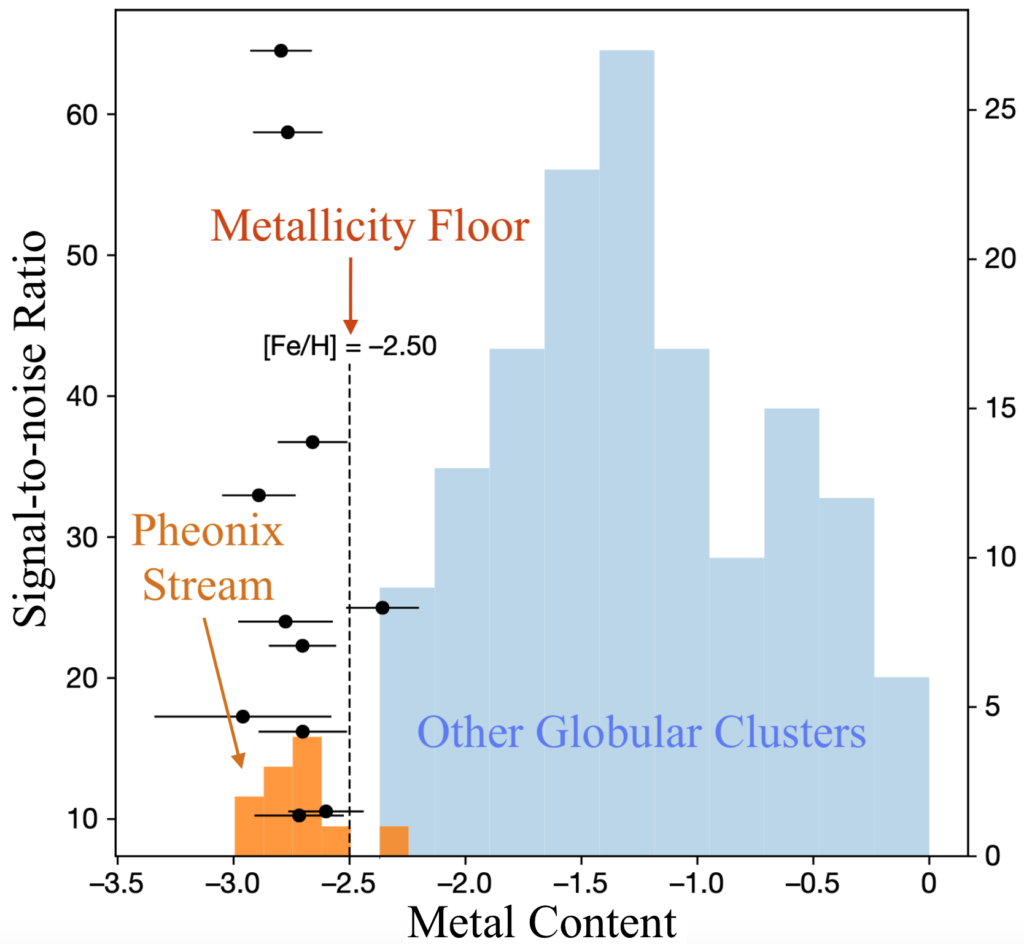Remnants of an old neighbour engulfed by the Milky Way

The paper, lead by Zhen Wan from USyd and co-authored by ASTRO 3D researchers and affiliates Jeffrey Simpson, Sarah Martell, Sanjib Sharma and Gayandhi De Silva, provides a new perspective about how galaxies evolve.
The research looks at a star cluster that is in the process of being pulled into the Milky Way, and may very well be the last of its kind.
What they found is a globular star cluster with the lowest yet recorded levels of metals (in astronomy, “metals” are elements other than Hydrogen and Helium) found in the Phoenix stellar stream, a set of stars in the halo of the Milky Way. The stream is believed to be the remnants of a globular star cluster, spread out over time.
Until Wan and colleagues made their measurements, astronomers believed that star clusters in the Milky Way – and in a wide variety of galaxies – all possessed at least a minimum amount of heavy metals such as iron (Fe). No clusters had been found that contained less than 0.3 per cent of the metals found in the Sun.
It was thought that this level constituted a “metallicity floor”, beneath which no star cluster could exist in the present-day Universe.
The Phoenix stream, however, contains a substantially lower component – less than 0.0019 times the metallicity of the Sun – meaning that its stars were formed much earlier in the life of the Universe. Low metallicity stars are thought to have formed as long as 10 billion years ago.

“The Phoenix stream thus represents the debris of the most metal-poor globular clusters discovered so far,” the scientists write.
Wan and colleagues suggest the ancient cluster was either formed in a dwarf galaxy or in a galaxy with lower than expected metallicity for its size.
“Its existence implies that globular clusters below the metallicity floor have probably existed, but were destroyed during Galactic evolution,” they conclude.
The researchers suggest that further observations – especially those that will derive from the soon-to-be-launched James Webb Space Telescope – will reveal whether the Phoenix stream is a galactic glitch, or whether similar remains of ancient clusters are more common than previously thought.
Article written by Teresa Slaven-Blair.
Republished from ASTRO3D

